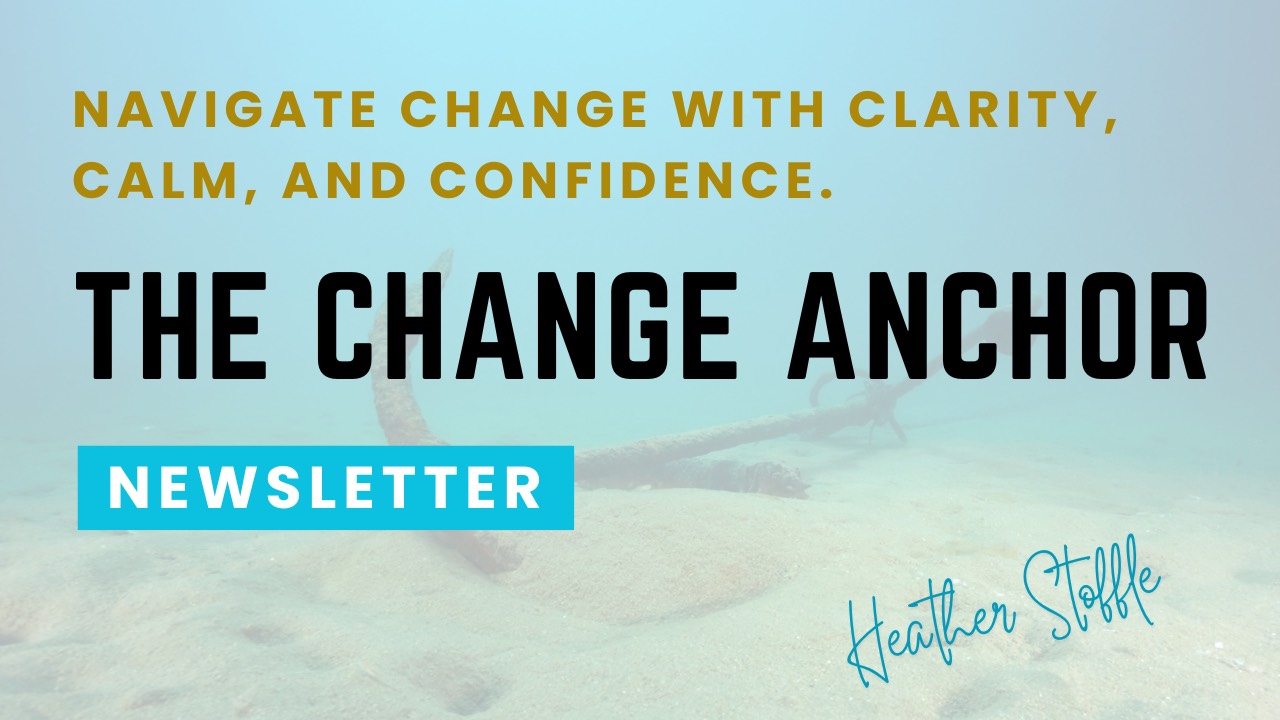Treading Water Isn't the Same as Making Waves: What two decades of leading change taught me about strategic impact
Nov 14, 2024
I remember the exact moment I realized I was treading water in my career. I was sitting in my office and it was late afternoon. I was staring at my whiteboard with a huge list of projects on it, when it hit me… I was doing everything "right" managing change but I wasn't creating real waves of impact in my organization.
This realization came after years of what looked like success on paper. I was the reliable one, the steady hand, the person who could keep things running smoothly no matter what was thrown at me. My leaders and stakeholders were satisfied, my teams were stable, and my projects were delivered on time. By all conventional metrics, I was succeeding.
But something felt off.
The trap of being comfortable
I realized in that moment that treading water can feel deceptively like progress. You're moving along and you're busy - you're keeping your head above water but somehow you're not actually going anywhere. I was managing change rather than making transformations, managing expectations rather than exceeding them, and I was playing it safe rather than pushing boundaries.
In the world of complex, large organizations, it's surprisingly easy to build a career on treading water. There's always a need for people who can maintain the status quo, who can keep things running smoothly, who don't rock the boat and put there heads down to do the work.
But here's what I learned the hard way. The leaders who create lasting impact, who build legacies, who transform organizations, they tend to make waves and making waves requires something entirely different than treading water.
The shift from treading to wave-making
To make the shift from treading water to making waves required several crucial mindset shifts.
Focus on breaking patterns. I stopped letting myself be the person who could fix any problem and started becoming someone who could identify and call out problematic patterns. This meant looking beyond immediate issues to understand the bigger forces at play.
Instead of managing risks, look at risks differently. Instead of focusing on minimizing all risks, I learned to distinguish between risks that threaten stability and risks that enable growth. Not all waves are destructive, some create new possibilities and push things forward.
Going from consensus-building to creating vision
While I greatly value buy-in and believe it’s extremely important, I stopped waiting for universal agreement before moving forward. I learned that true change requires leading from the front, even when the path forward isn't completely clear to everyone and no matter what you do you may not get 100% every time. I now aim to have around 80% of people aligned or supportive, understanding that the final 20% may need more time, have a different perspective, or simply won’t come around. This is based on the idea that reaching full consensus is rarely realistic and often stalls progress, especially in complex or high-stakes environments.
The cost of making waves
I’m going to be totally honest in that for the longest time, I didn’t make waves because it just wasn't comfortable and you have to put yourself out there. As an introvert that was especially hard for me to overcome. When you start creating real change, it’s going to be very uncomfortable for you and those around you. You’ll likely face all the things…
- Resistance from those comfortable with the status quo
- Criticism from those who don't yet see your vision
- Moments of doubt when the waves you're making feel too big
- The weight of responsibility for the impact of your changes
But what I’ve learned from being uncomfortable is that these aren't costs of making waves, they are actually investments in true impact.
Creating change is rewarding
The most profound reward of shifting from treading water to making waves isn't in the tangible results, although those matter. It's in the transformation you see in others and yourself.
- Teams start thinking bigger and reaching for higher goals
- Colleagues find courage in your examples and view you as a role model
- Organizations evolve in ways that seemed once impossible
- Lasting changes that continue creating ripples long after you've moved on - and this is one of my favorite, to look back over the years and see that the changes you made mattered.
My challenge to you
If you're reading this and you recognize yourself in the treading water description, know that you're not alone. Many capable leaders spend years efficiently treading water. However, I want you to ask yourself the following…
- What waves could you be making?
- What changes have you been hesitating to get out in front of?
- Where have you been maintaining that status quo when you could be transforming instead?
The ripple effect
Remember that every wave starts with a single movement, a single drop that turns into a ripple moving outward. You don't need to create a tsunami on day one. Start with small ripples of intentional actions that move the status quo in positive ways. Focus on changes that align with your values and vision and work to build momentum gradually.
Most importantly, understand that making waves isn't about being disruptive for disruption's sake. It's about creating meaningful change that propels your organization and your people forward in ways that have a lasting positive impact.
Moving forward
As I look back on my journey from when I was treating water to making waves, I'm grateful for both times in my life because they taught me valuable lessons that I’ve been able to build upon. Treading water taught me stability, reliability, and the importance of maintaining what works and making waves taught me about impact, influence, and the joy of creating positive change.
Your journey from treading water to making waves starts with a simple question: What's the first ripple you want to create?
-Heather
This post is part of my "Ripples of Wisdom" series, where I share insights from two decades of leading complex change in global organizations. Follow along for more deep dives into leadership, transformation, and strategic influence.




